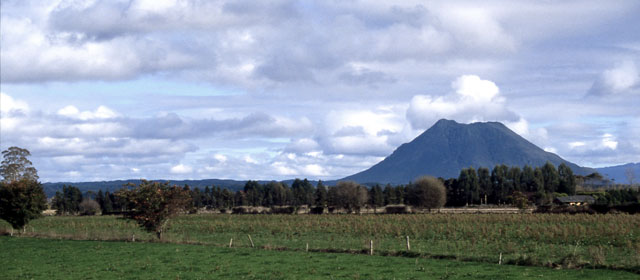Story summary
Lands
The traditional tribal area of Ngāti Awa is in Bay of Plenty. The boundaries of the Mataatua tribes are from Bowentown in the west to Whangaparāoa in the east. Muriwai, sister of the Mataatua captain Toroa, placed a restriction on this area of the coast when her two children were drowned – ‘mai i Ngā Kurī-a-Whārei-ki-Tihirau’ (from the Dogs of Whārei to Tihirau). Pūtauaki (Mt Edgecumbe) is the tribe's ancestral mountain.
Origins
Ngāti Awa trace their origins from important early ancestors:
- Māui, the legendary hero who was half man and half god
- Tīwakawaka, the first explorer to settle the land around Whakatāne
- Toi, who lived at Kaputerangi above Whakatāne.
Ngāti Awa tradition tells of the arrival of the Mataatua canoe, captained by Toroa. His grandson, Awanuiarangi II, became the ancestor from whom Ngāti Awa and their sub-tribes all claim descent.
Early history
The tribe began in the north of New Zealand, but around 1600 they migrated south. Tītahi led one group down the west coast to Waitara in Taranaki; the other group, led by Kauri, travelled down the east coast to Tauranga.
The 19th and 20th centuries
Initially, Ngāti Awa and European settlers were quite friendly. However, the settlers began to want land and the tribe became more protective of their territory. Eventually Ngāti Awa were accused of rebellion and blamed for the death of the government agent James Fulloon. Their land was confiscated as a result.
Ngāti Awa today
In the late 20th century a Ngāti Awa tribal authority was established, as well as a centre of higher learning and a radio station. Ngāti Awa are also repairing the Mataatua meeting house, an important cultural and historical icon. A settlement agreement was made with the Crown for past grievances in 2003. In the 2013 census, 16,179 people said they were of Ngāti Awa descent.





